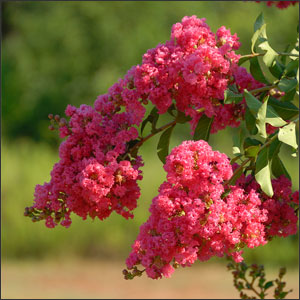What You Need to Know About Growing Crape Myrtles

Are you looking to add that something extra to your yard?
Have you had a difficult time growing trees in the past?
Growing trees can be difficult depending on the environment. The soil, sun, and amount of rain your area gets all plays a role in how well your tree will do. Today, we are sharing some great tips and tricks about growing crape myrtles. Whether you call them crape myrtles or crepe myrtles, these trees are gorgeous additions to any landscape.
You may already know that fall is a perfect time to plant trees. Choosing which trees to plant is the first step. The crape myrtle might be just the right tree to make as the focal point in your backyard or the perfect tree to add a little pop of color to your front yard.
Crape myrtles are wonderful for warmer climates because they do so well in summer heat. They come in an array of beautiful colors from white to deep red. This tree will flower during the summer time and grows best in zone 6-9. If you are not sure what zone you live in, you can find that out by reading How to Understand Gardening Zones.
According to Southern Living, crape myrtles are an excellent choice for those who live in southern climates. This is because the tree, “tolerates heat, humidity, drought; does well in most soils as long as they are well drained.” There are a number of crape myrtle varieties.
The United States National Arboretum reports that there are 29 different crape myrtle varieties to choose from. There are dwarf crape myrtles that grow less than 3 feet tall and others that grow as tall as 30 feet. Popular varieties include:
- Osage Crape Myrtle – clear pink flowers that grows up to 15 feet
- Natchez Crape Myrtle– white flowers that grows up to 30 feet
- Miami Crape Myrtle – dark coral pink flowers that grows up to 25 feet
One of the hardest aspects about growing a tree is bringing the tree home from the nursery. The tree will actually go into a state of shock. Sometimes the transfer is too much even for hardy trees like crape myrtles. The best way to act against that is by installing a direct to root watering system.
When a new tree is planted the roots are seeking out nutrients. Often times the nutrients are sitting on the top of the soil. So instead of growing deeper into the ground the roots seek the nutrients that are on top of the soil.
The direct to root watering system get the nutrients to the root zone. Now the nutrients are deeper into the soil and that is where the roots will grow. As we all know, deep roots equals a stronger tree.
What tree are you planning to plant this fall?

